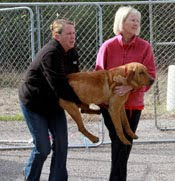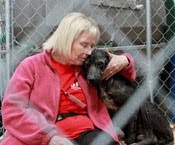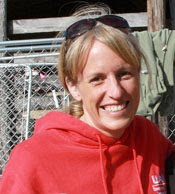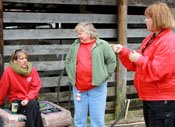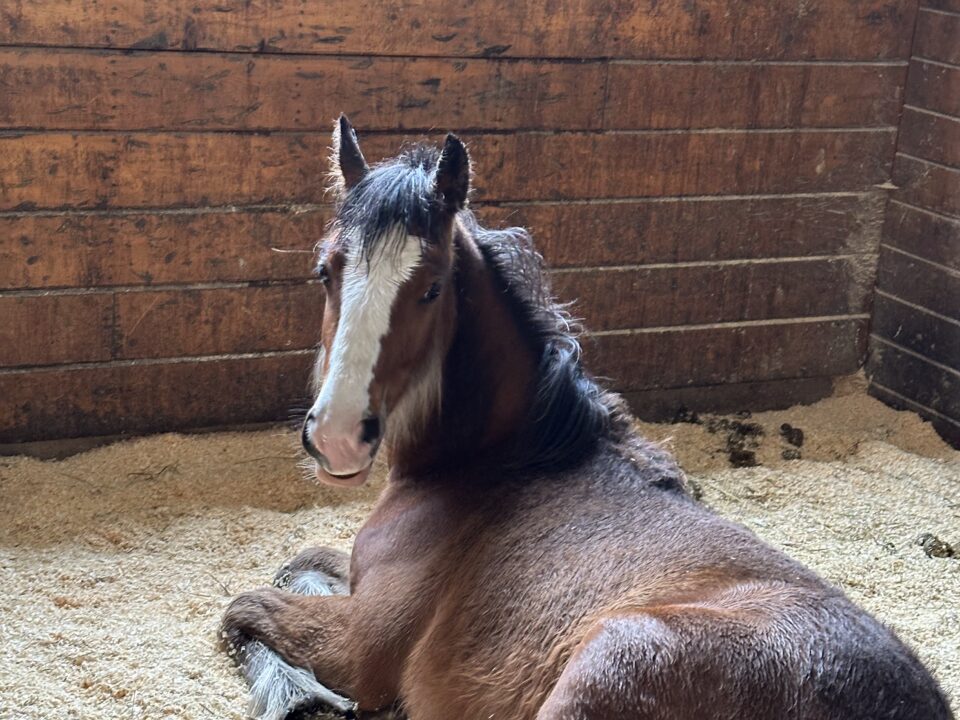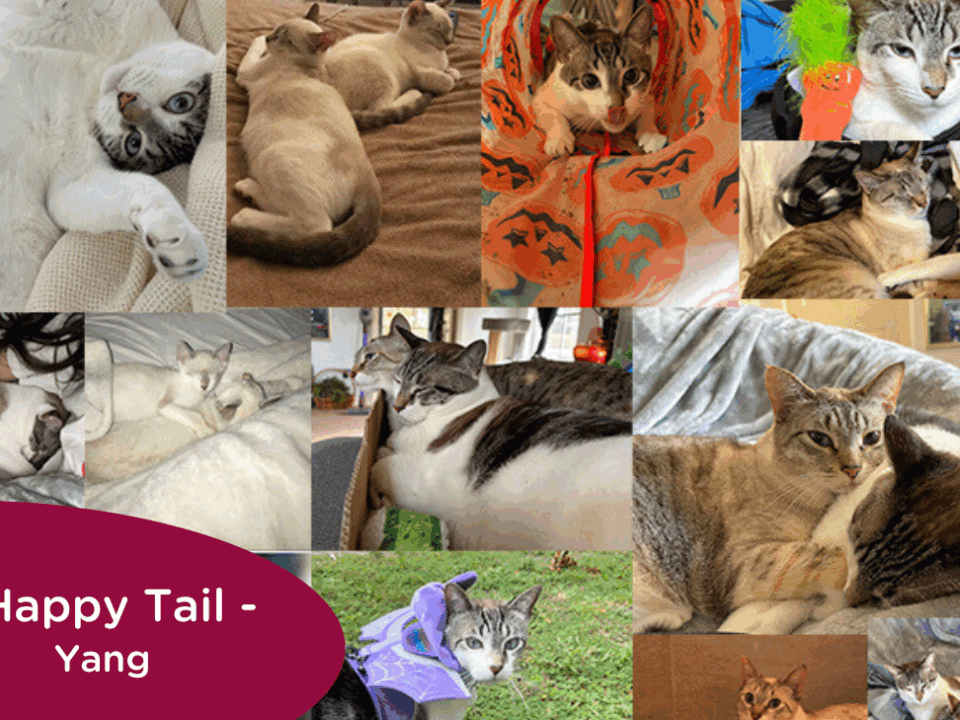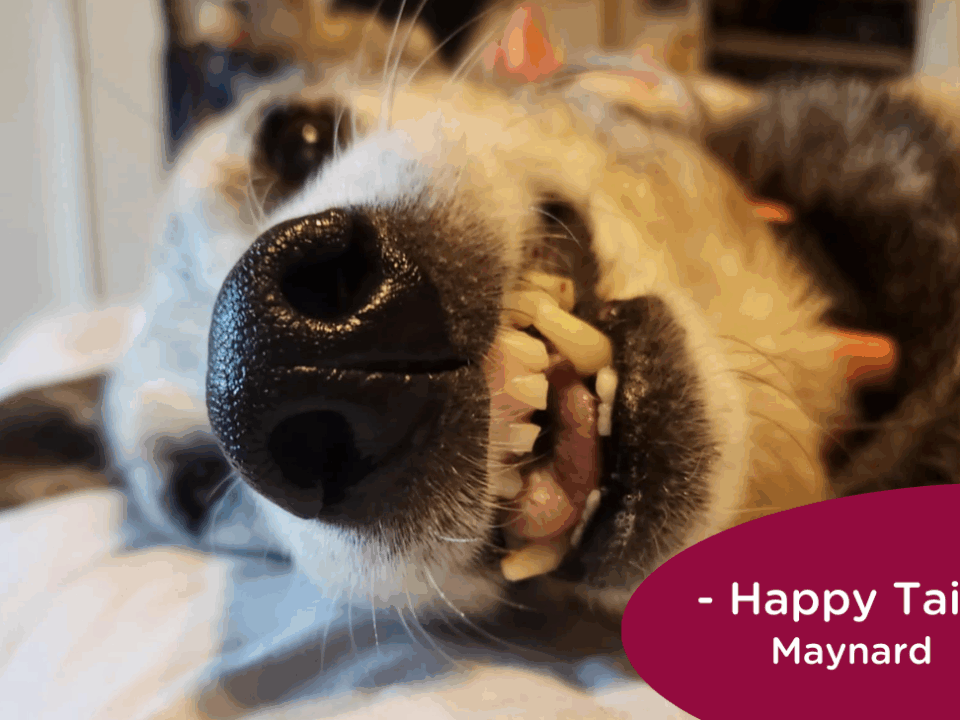A successful rescue, just about over
March 18th, 2010
Submitted by EARS volunteer Marcia Goodman of Cromwell, Connecticut
Well, I’m back home in Connecticut, and the deployment is just about over. Tomorrow I’ll do a final wrap-up blog entry. Today I’ll focus on the two people I interviewed at the very end of my time in Mississippi: Janet Roush of Nebraska, and Janell Matthies, on staff with UAN as its Emergency Services Manager
It’s very cool at a UAN deployment that when volunteers arrive at a deployment, they jump right in and participate fully as if they had been there all along. That’s part of the benefit of the excellent training and experience we get from UAN.
Janet Roush of Nebraska is no different. She was the last volunteer to arrive for the deployment because weather problems delayed her flights on route, but from the start she participated as if she had been there for the entire deployment.
This is Janet’s first deployment with EARS. She found out about UAN from one of the directors of Hearts United for Animals based in Auburn, Nebraska, which is a private nonprofit no-kill shelter located on 65 acres at which Janet volunteers.
Janet has always loved animals. She took in strays as a child. She started looking for rescue dogs to adopt and stumbled upon Hearts United for Animals and began volunteering with them. She socializes and walks dogs, helps unload dogs when large rescues of puppy mill dogs arrive, and if they’re dirty, she bathes them.
Janet (at right, with Melissa Folberg of HSUS) feels very good about this deployment. She said after the first day that she was tired but thankful the dogs are out of the situation they were in. She loves to be with dogs and just sit and make them feel a little better. She has a lot of empathy for them. She thinks UAN is a great organization – it seems to be a great group of people coming together for the betterment of animals, to relieve their suffering. She hopes to go on more deployments.
Janet told me that at the shelter at home, she’s called the “Chihuahua Trainer” because she takes to the most ornery dogs. Well, in De Kalb, Mississippi, Janet was helping to work wonders with Hope, the emaciated girl who, when she first arrived at the shelter, always tried to hide from people. The volunteers worked hard with Hope, sitting in her pen, talking softly to her, and bringing her treats. To the right is a photo of Hope with Janet just five days after the dogs were rescued. A few moments before this photo, while Janet was sitting in Hope’s pen talking softly to her, Hope started to come out of hiding. She slowly made her way over to Janet and snuggled up next to her. What a moment. If anyone doesn’t understand what makes UAN volunteers want to work with rescued animals, this photo says it all. Shortly after this photo, Hope curled up next to Janet, rested her head on Janet’s arm, and took a nap.
Janell Matthies (right) volunteered with UAN for 15 years before joining the staff a little over a year ago. Before that, she was an event coordinator for City of Sacramento and a 911 dispatcher.
Janell has always been drawn to animals; it’s in her blood. Her parents always brought home strays and helped injured squirrels, and her sister is now a veterinarian. Janell’s first volunteer involvement was with the local SPCA.
Janell first learned about UAN when Sacramento was flooded. She heard about a temporary shelter, went to volunteer, and was thoroughly impressed with the organization and amount of work they did in such an efficient manner. That was UAN. She got to know more about the organization and really liked their attitude and that it’s a well run organization. She took UAN’s training after the flooding ended, and took it a few more times as a “refresher” and so the trainer could use her information and ask her opinions to help train new volunteers. She tried to be as involved and supportive as she could.
As a volunteer, Janell went on about 15 deployments with UAN. Because she worked for the fire department, which understood about emergencies, she was able to take vacation on short notice. The City of Sacramento also supported what she did and worked with her to take time off.
The staff position of Emergency Services Manager opened up at UAN, and Janell had worked closely with UAN staff on previous deployments and even led a couple of deployments at that time. UAN and Janell agreed that it seemed like a really good fit.
Every deployment is different, Janell says. There’s always some new challenge and something always changes. In this deployment, the EARS team had to overcome a lot of obstacles including the irony of having the shelter located in a meat processing plant. “We changed the karma of that building,” Janell says. “Luckily we had Stacey [Harris] here. Stacey is totally competent and efficient and not easily ruffled.”
Janell commented on the difference between deployments in natural disasters and in criminal seizures. Natural disasters are usually more labor intensive without accommodations like restaurants, beds and showers, so these are more difficult from a practical perspective. However, emotionally, criminal seizures are heartbreaking because a person did this to the animals; someone intentionally made this happen. The emotional aspect is very challenging – trying not to be angry because the animals need us to do the job and not focus on negative issues.
Last year, Janell went on 18 deployments, 16 for criminal seizures and 2 for natural disasters. She usually goes to each deployment for at least part of the time. For larger operations, she serves as shelter coordinator and a volunteer will be the lead field person.
I asked Janell how she feels about this particular deployment. She says that every deployment amazes her because the volunteers come together and each time, everyone says this is a really great group. All personality issues are put aside and everyone works together for the animals. She never sees in-fighting; just a great group across the country no matter what type of deployment. It gives her faith in humankind. The job not only gets done, it gets done it with extra attention. Long-term relationships develop; if you don’t see a volunteer for two years and then you see that person again, it’s like seeing your best friend from high school.

